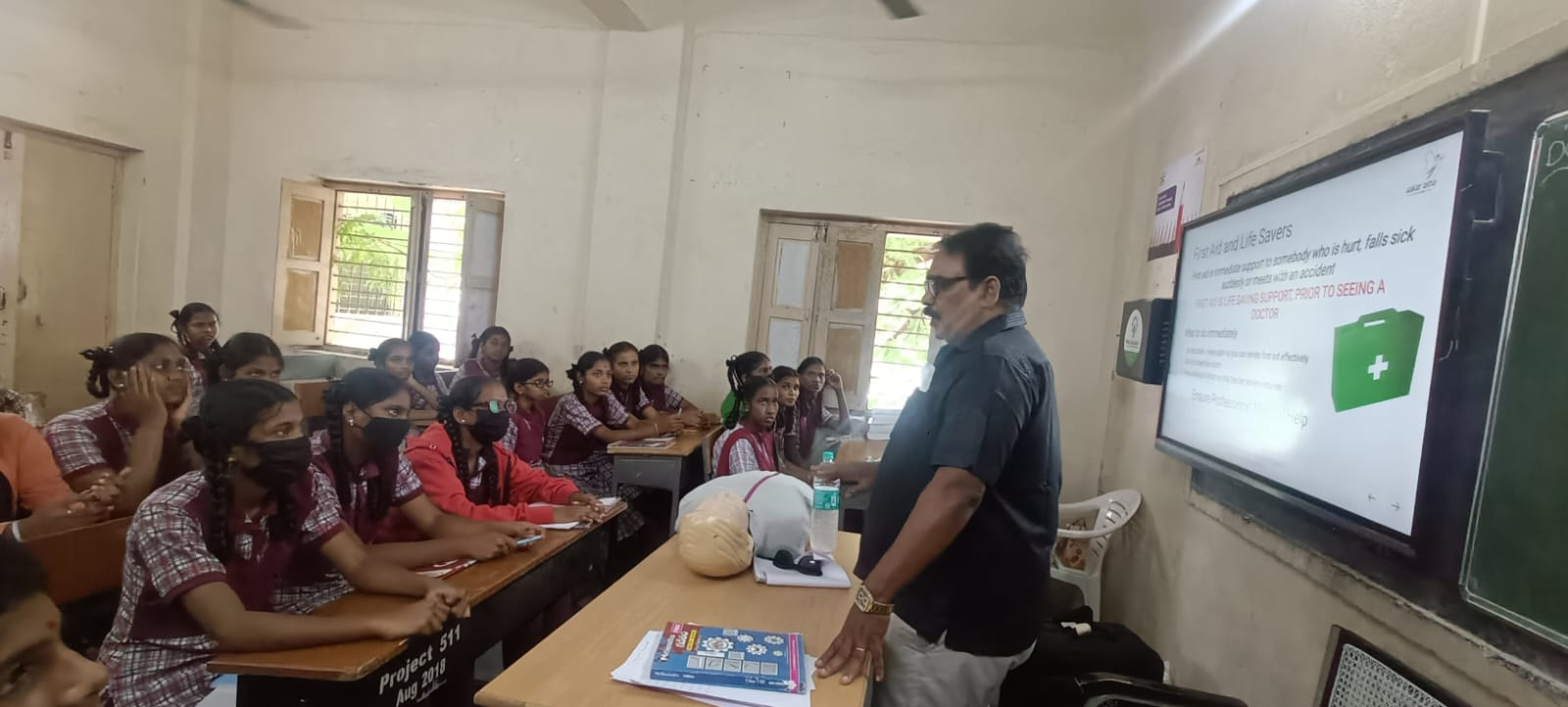SHIKSHA
Education is believed to be the only means for a developing nation like India to develop widely. Hence, the RTE (Right To Education) Act was implemented in the year 2009, enforcing free and compulsory education to all children between the age of 6 to 14 years. RTE Act’s main goal has been to achieve 100% literacy rate across the country and to increase the learning levels.
According to a survey in 2013 conducted in 780 Government Schools across 13 Indian States, key facilities such as toilets and drinking water were mostly found missing or in poor condition. Added to this, there is the problem of lack of teachers for the large numbers of children attending the government schools. Against this backdrop, access to education is problematic for India’s poor and it makes it difficult for appropriate education to be imparted to the children.
Description of the Program
The program currently works in Shaikpet, Khairatabad and Secunderabad mandals in 12 Government schools in Hyderabad region, Telangana state. We have had the following type of interventions
Infrastructure Changes in Schools
Over the years, Kriti has improved infrastructure in over 10 schools. The interventions were important to provide a better learning environment for the children. We have consistently seen that the enrolment has improved at the schools after the work is completed. Some of the initiatives are:
- Painting of school premises including classrooms, compound walls etc.
- WASH areas – Providing drinking water, bathroom building and remodeling, plumbing and sewage line repairs.
- Repairs – Major repairs due to water damage, building and repairing staircases, flooring, compound walls, rooftops etc.
- Providing additional covered space on rooftop to conduct sports or exams.
- Providing Benches, teacher tables and chairs, computer systems, speakers, projectors, other TLM etc.
Providing Teachers
- Improving the teacher to student ratio is key to ensure better learning outcomes for the children. The current teacher to student ratio in the schools is 1:45. Kriti has employed 18 teachers in 12 schools, thereby improving the teacher to student ratio to 1:30.
- The teachers are employed and deployed to those schools identified by DEO where there is a lack of teachers and the enrollment is good.
Teacher Training
- Focus on teacher training – over 20 days of training per teacher per annum to enable us to deliver good quality teaching with local community resources. Teachers are also taught various pedagogies in order to expose them to alternative methods of education.
- Teachers are trained to design teaching activities that cater to the development of physical, social, cognitive skills among children.
- Teachers were trained in computer skills in a 3 months free program in Kriti computer lab and made them skilled to report online and to upload content to be able to share the same with their colleagues for better coordination and knowledge sharing. Teachers were given training in using Zoom and Microsoft Teams app to take online interactive classes during covid pandemic, closure of schools.
- Teachers were trained in gender sensitization so that they have equitable classrooms and allow for positive reinforcement for both boys and girls. Some teachers became Master trainers (as part of Project Samatha) and later taught multiple sessions to their co-teachers and parents in their schools.
Additional Resources
- During Covid pandemic, teachers and students were given internet activated tablets in 3 schools so as to teach the students online. Along with students, parents were also oriented about the usage and benefits.
- Program provides essentials like notebooks and art and craft supplies to the children to ensure their education is unhindered.
- Teaching and learning materials are provided to teachers to use in their classes.
Impact
- There is a direct impact on the students who are being taught by the Kriti appointed teachers. If the teachers were not appointed, then the schools would be understaffed and teaching across the school would suffer. In 2023-24, this program impacts over 6000 children who are enrolled in 12 schools with an average attendance of 4800 per day.
- Impact is also seen in the improvement of grades of children taught by Kriti appointed teachers compared to other classes.
- In all the schools where teachers were appointed by Kriti, as the teacher to student ratio is better, we have noticed an increase in enrolment into those schools.
- The program impacted more children and other teachers in the school as all the Kriti teachers are given hands-on training. For example, Mathematics is now taught using an activity based method and the teachers are also provided the math activity kits. This enabled more children to get benefitted as other teachers in the schools too showed interest to learn and implement them.
Kriti works with the Department of Education to share the concerns regarding teacher attendance, performance and school infrastructure, shortage of teaching staff in schools as Vidya volunteers were withdrawn during and after covid. Over a period of time, we have seen that as school enrollment improved, the department allocated more teachers to the schools. With better infrastructure and support, it is also easier to attract government teachers to take up posting in the school and thus, the school improves and sustains at a higher level than before the intervention. Advocacy towards sustainability of the government schools with better government support is a key element of the project.
Kriti teacher at Shaikpet primary school -teaching greater and lesser than
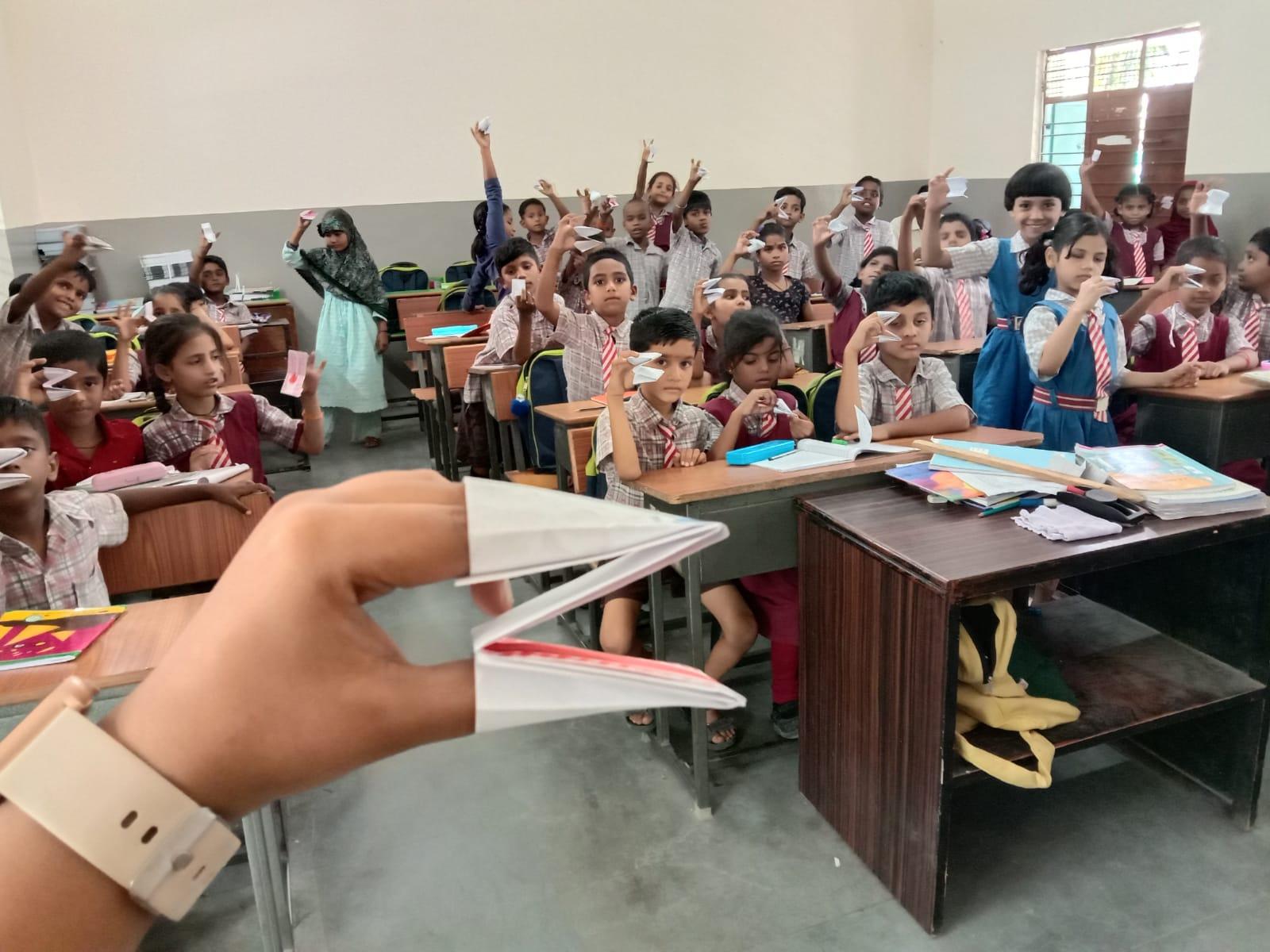
Learning activity in the class
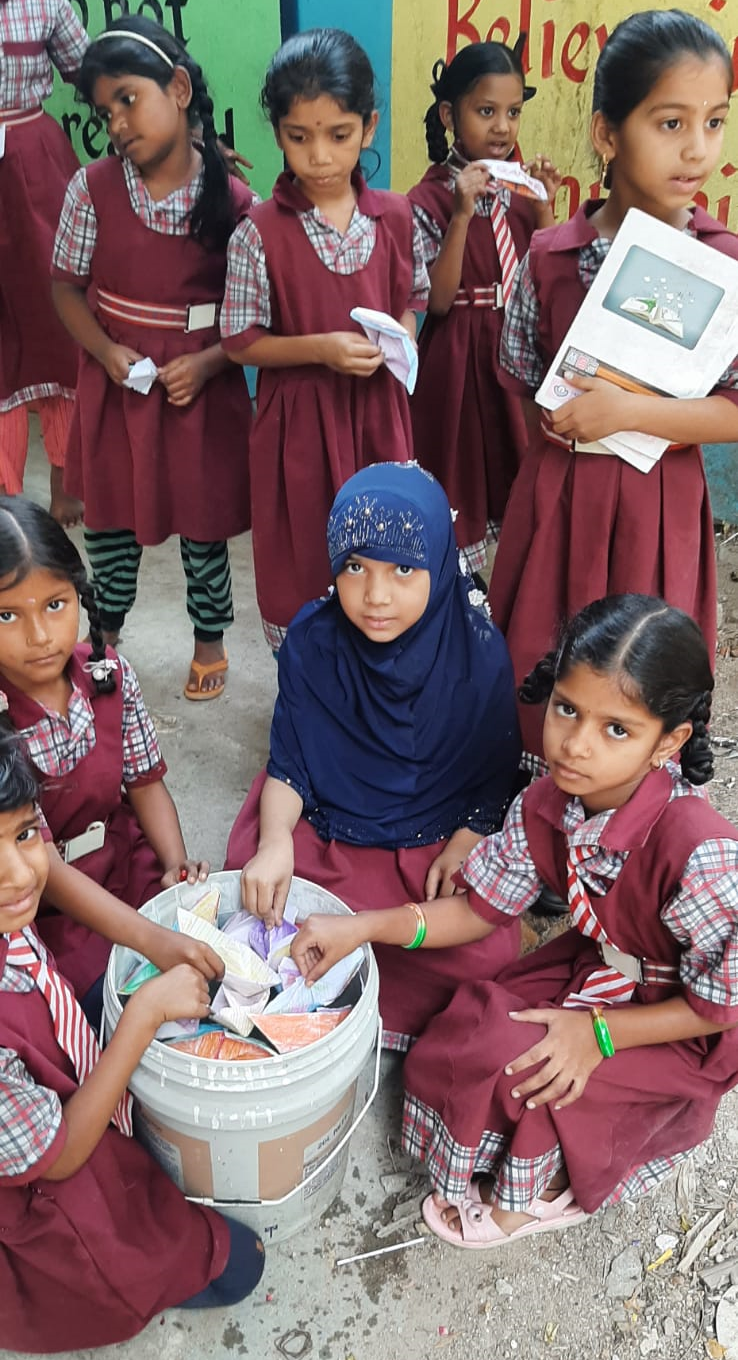
Teaching learning material prepared and used by Kriti teacher
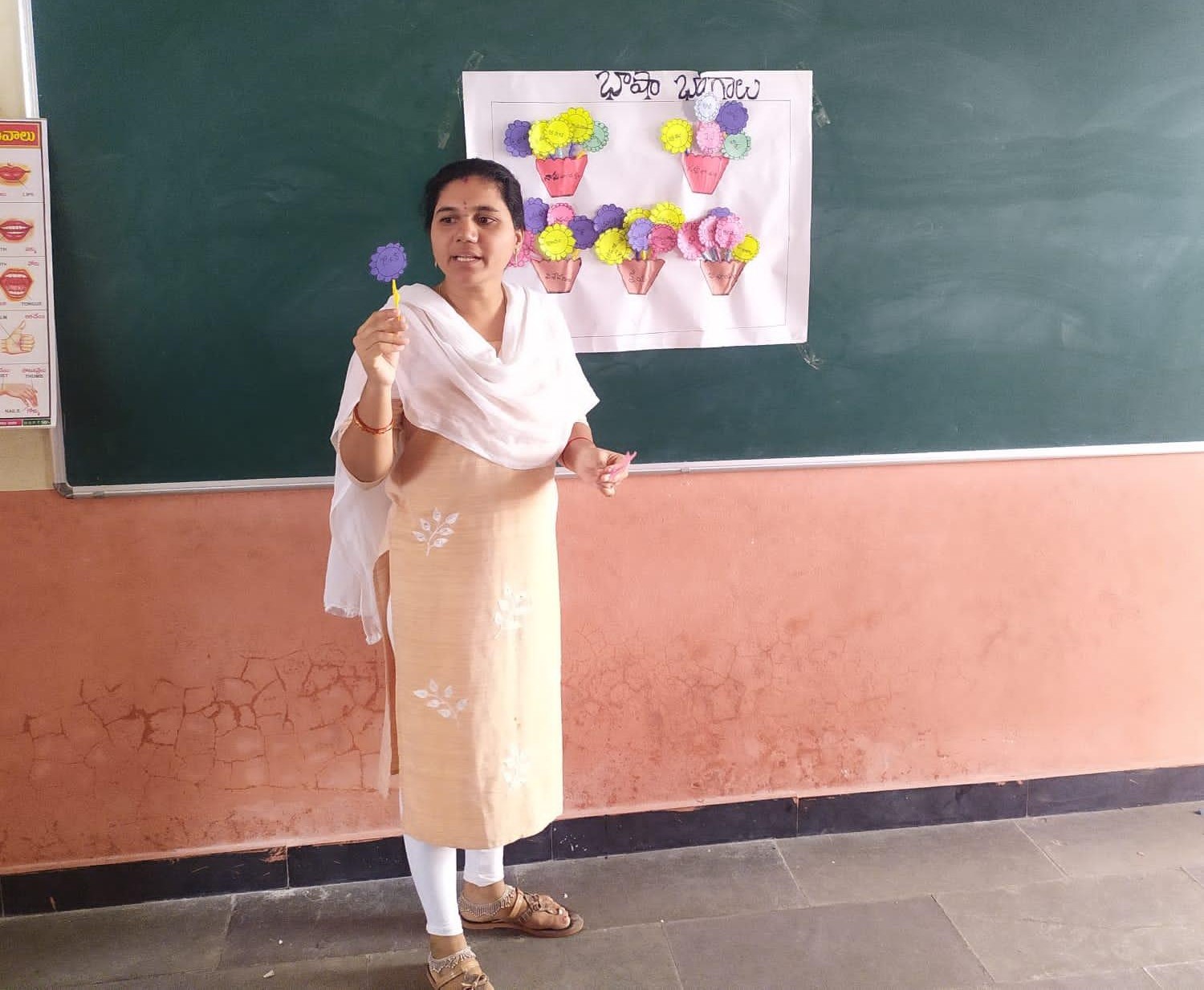
Bathukamma making activity involving children -hands on experience
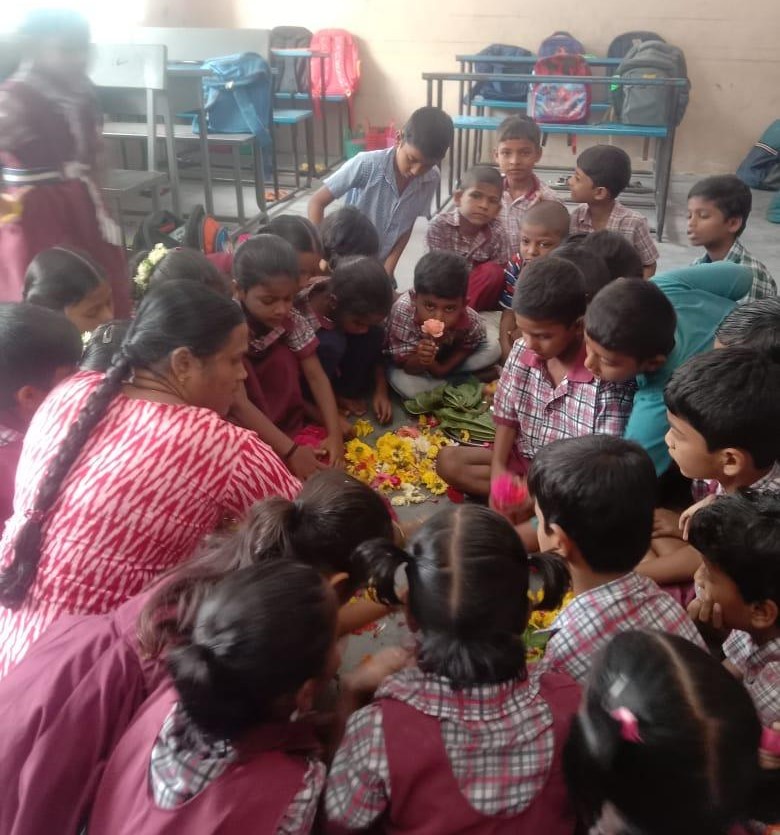
Training for Kriti teachers: Story- telling using props made with available waste material
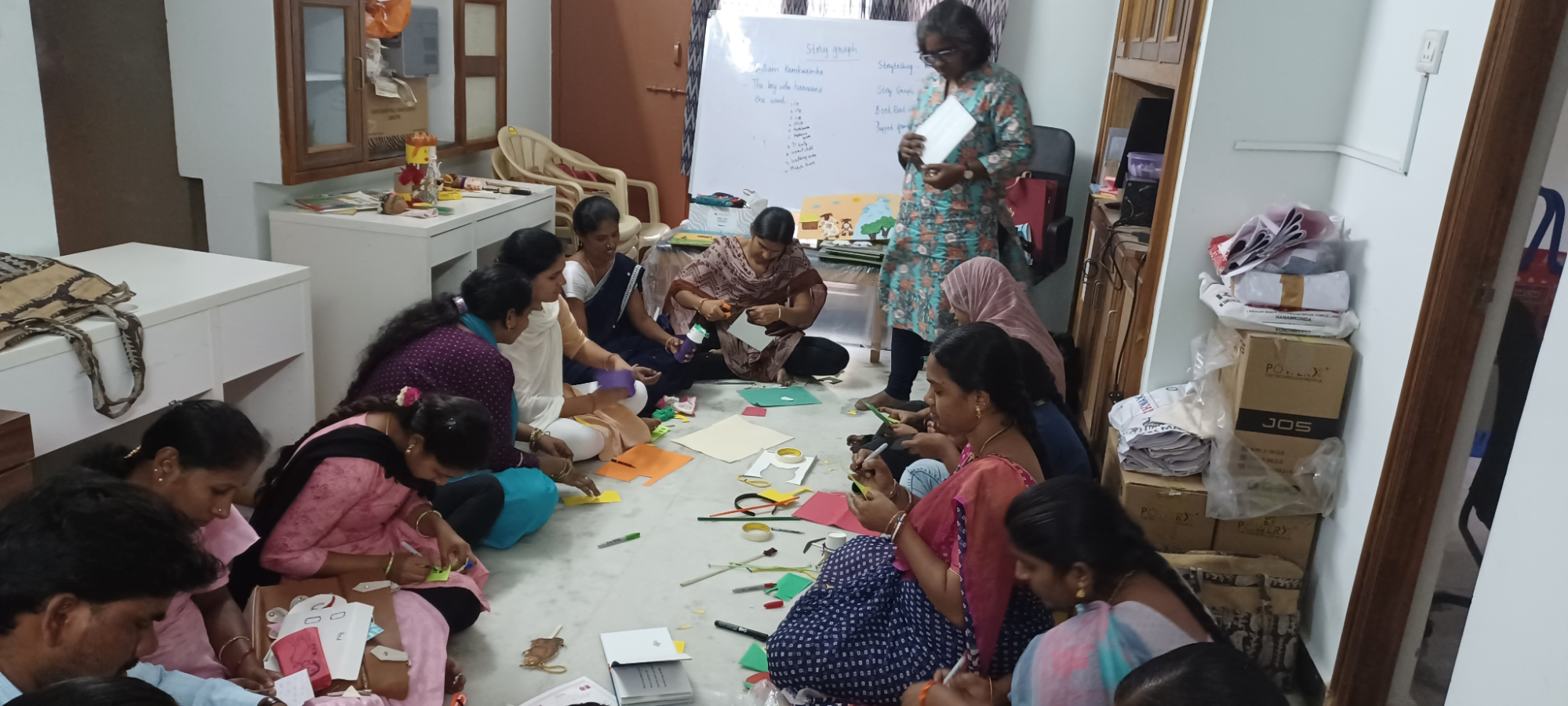
Additional rooftop shed for group activities and lunch space provided at Shaikpet Govt. High School
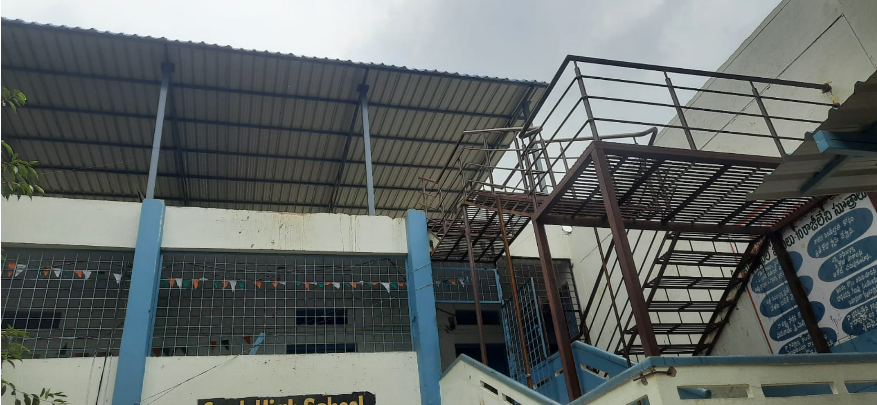
MGN School building
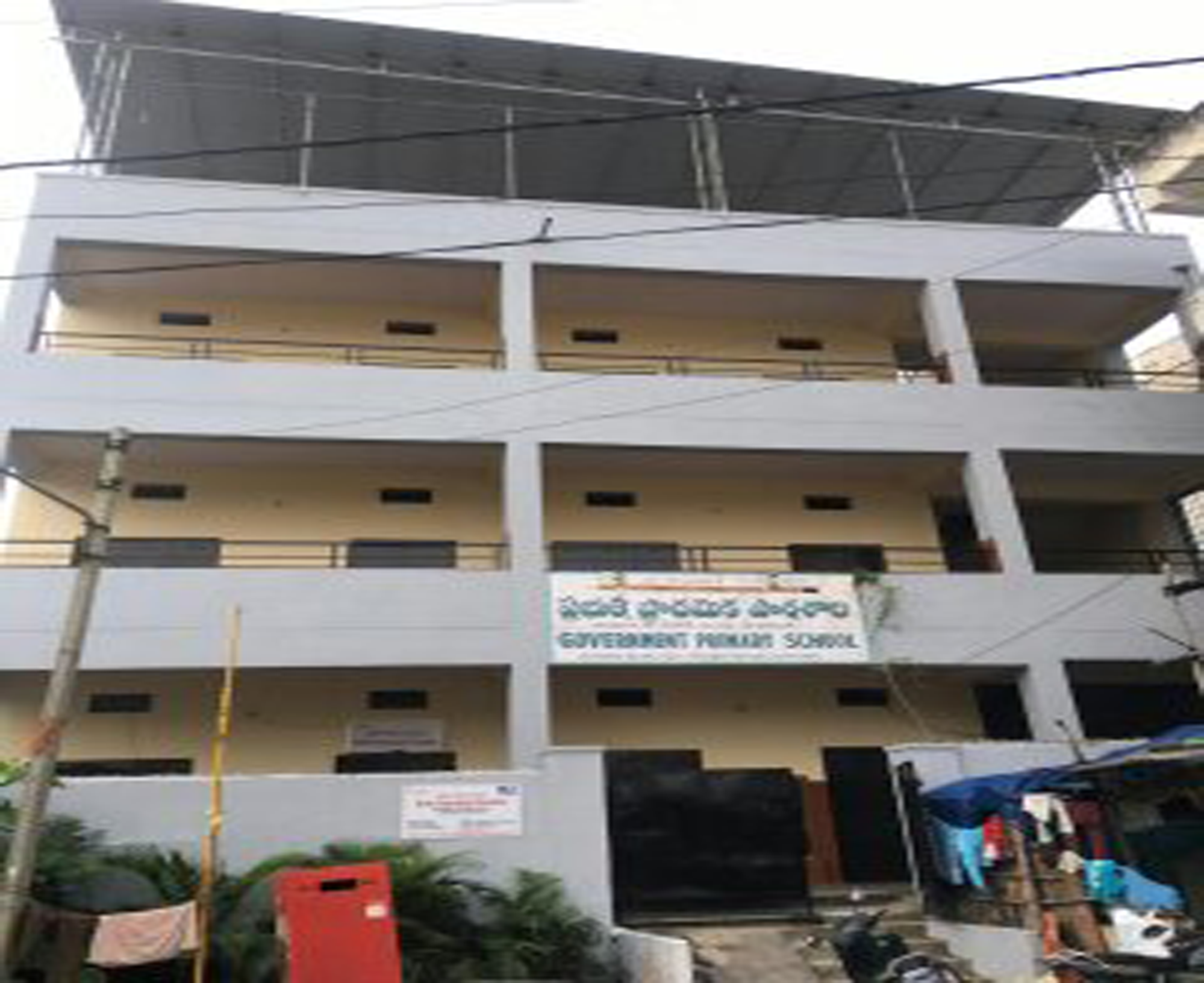
Sankranthi/Pongal Celebrations in the school
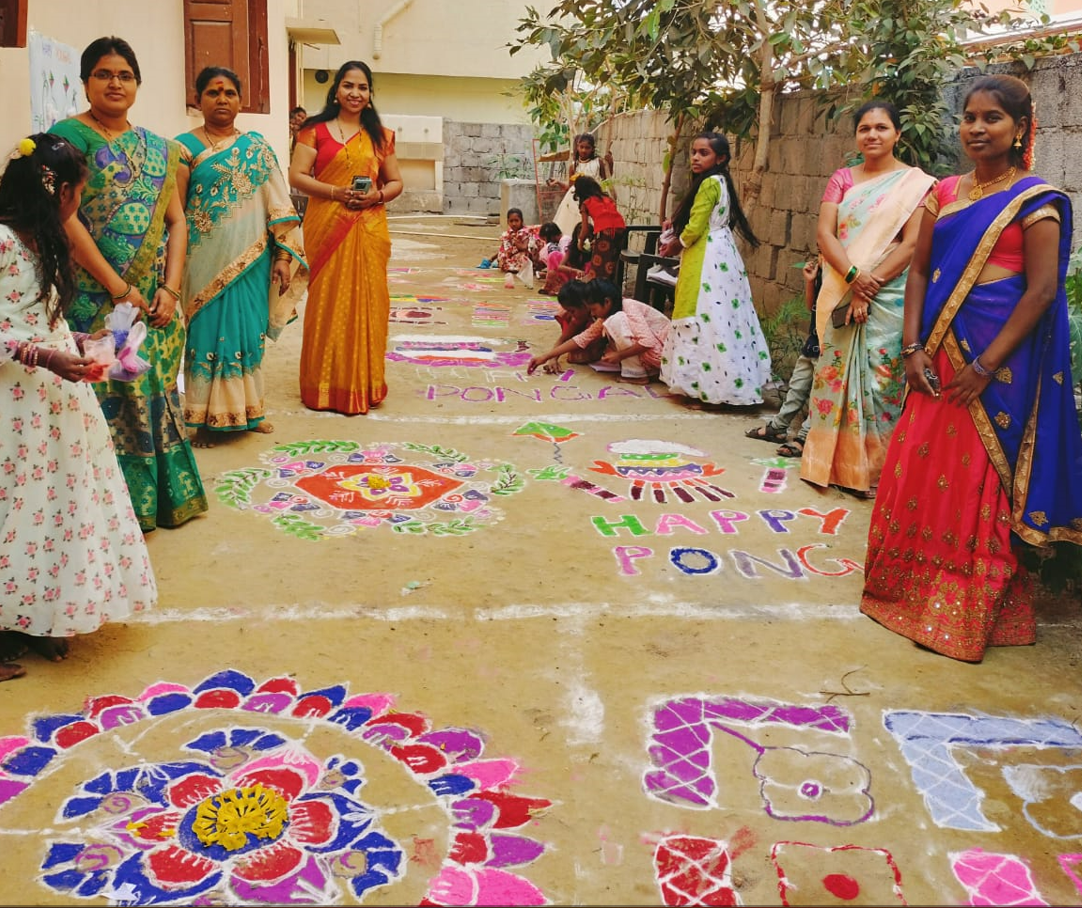
First Aid training for class 9 and 10 students in Government schools, Shaikpet mandal
